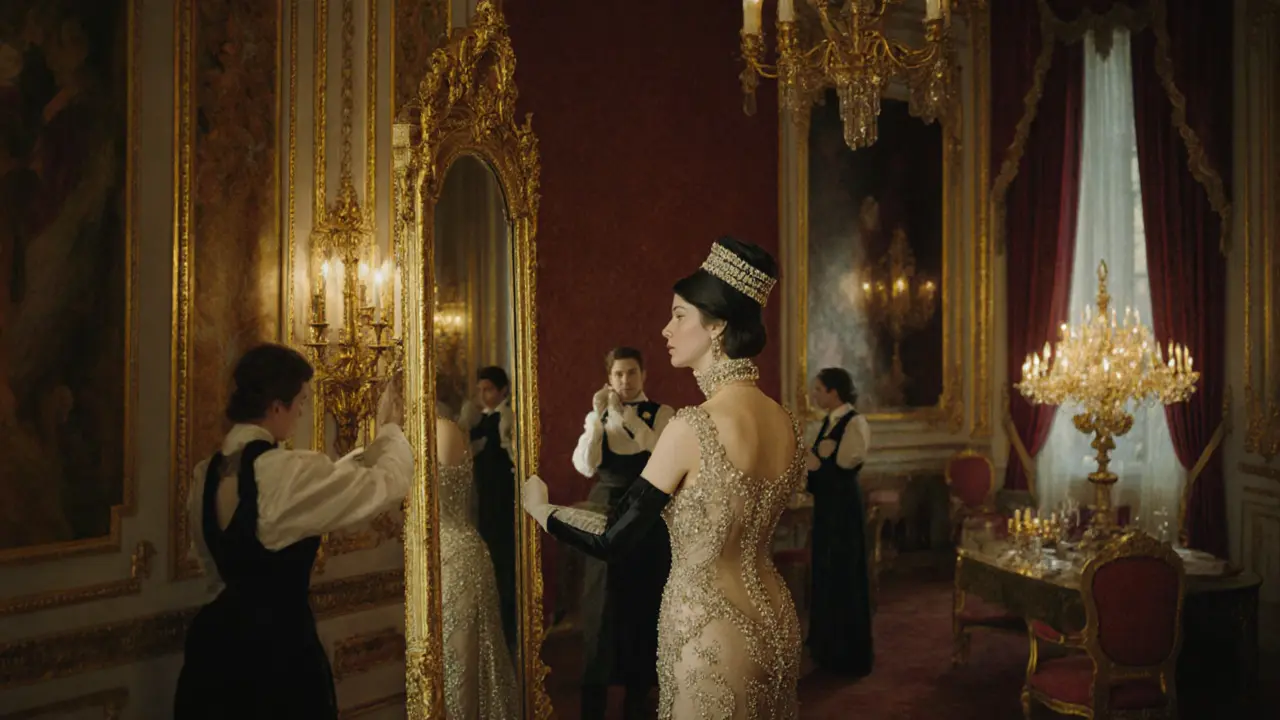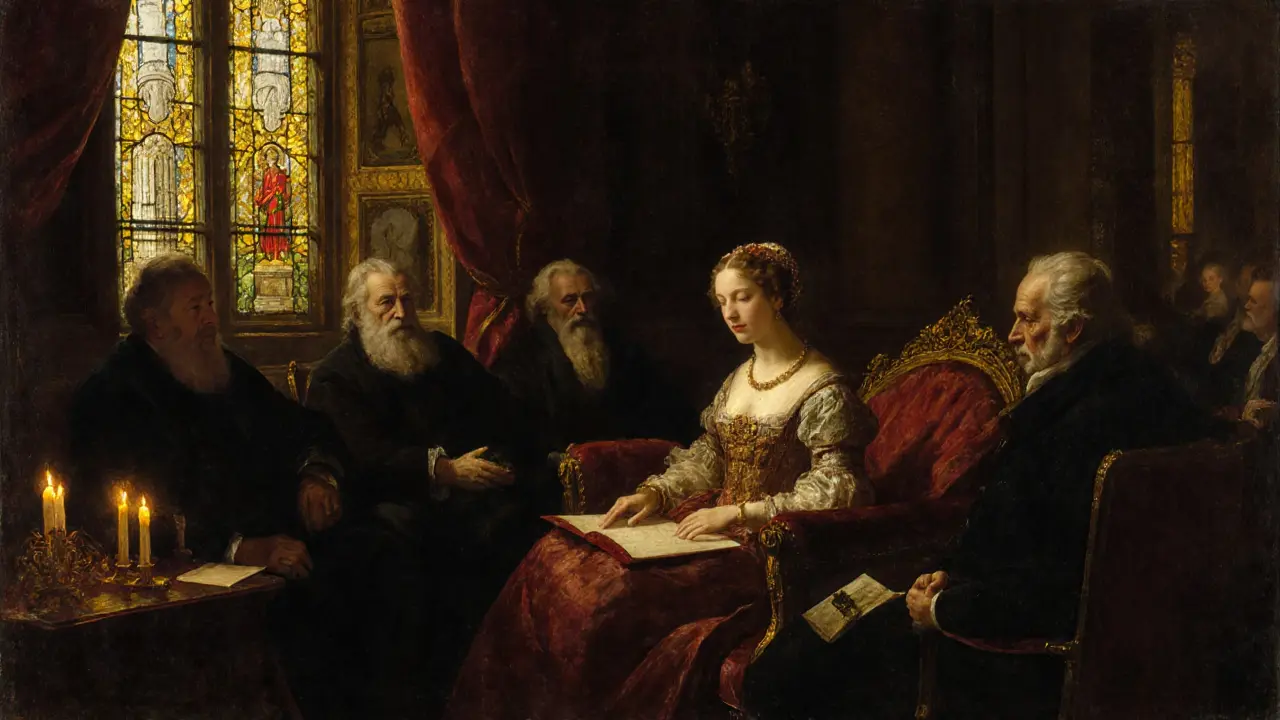Paris has always been a city of allure, where desire and artistry tangled in the shadows of candlelit salons and bustling boulevards. The presence of companions-women and men who offered more than just conversation-dates back centuries, long before the word "escort" became a modern label. These figures weren’t just transactional; they shaped culture, influenced fashion, and moved through the highest circles of power. Understanding their history means looking past today’s stereotypes and into the real lives, risks, and freedoms these individuals carved out for themselves.
The Courtesans of the Renaissance and Absolute Monarchy
In 16th-century Paris, the most powerful women in the city weren’t queens-they were courtesans. Women like Diane de Poitiers, mistress to King Henry II, held political sway, commissioned art, and controlled vast estates. These weren’t street-level workers; they were educated, politically connected, and often wealthier than noblewomen. A courtesan’s value came from wit, charm, and cultural fluency. She might host literary salons, advise diplomats, or broker alliances behind closed doors.
The term "courtisane" was used with respect, not shame. Many came from modest backgrounds but rose through talent and connections. One famous example is La Belle Otero, a Spanish-born courtesan who dazzled Paris in the late 1800s. She danced at the Folies Bergère, wore diamonds worth millions, and counted kings and industrialists among her lovers. Her life was a performance-and she controlled every scene.
The Rise of the Demi-Monde in the 19th Century
After the French Revolution, the old aristocracy collapsed, but the demand for sophisticated companionship didn’t. A new class emerged: the demi-monde. These women lived on the edge of respectable society, renting apartments in the Faubourg Saint-Germain, attending opera boxes, and dining in the city’s finest restaurants. They weren’t prostitutes-they were kept women, funded by wealthy patrons who saw them as status symbols.
Artists like Édouard Manet and Henri de Toulouse-Lautrec painted them. Writers like Émile Zola and Guy de Maupassant wrote about them. Their lives were documented in newspapers and memoirs. One of the most famous was La Païva, a former servant who married a Russian prince after amassing a fortune through relationships with French bankers. Her mansion on the Champs-Élysées had a gold-plated bathroom and a private theater. She became a legend-not for her beauty, but for her business acumen.
By the 1880s, Paris had over 100,000 women registered as "demi-mondaines." The city’s police kept detailed files on them, tracking addresses, clients, and income. Many paid taxes. Some even owned property. The state didn’t outlaw them-it regulated them. This wasn’t criminality; it was an institution.
20th Century: War, Silence, and the Underground
The World Wars changed everything. During World War I, Paris became a hub for soldiers on leave. Military brothels were officially sanctioned, but so were private arrangements. Women who worked as companions during this time often did so to survive. Many were widows, orphans, or refugees. Their stories were rarely recorded-except in private letters and diaries.
After 1946, France passed the Loi Marthe Richard, which shut down brothels and criminalized solicitation. The state claimed it was protecting women. In reality, it pushed the trade underground. Many former courtesans became independent companions, working through discreet networks. They didn’t advertise in newspapers anymore-they relied on word of mouth, trusted friends, and elite social circles.
By the 1970s, a quiet revolution began. Feminism, sexual liberation, and the rise of the service economy gave women new ways to control their own labor. The term "escort" started appearing in classified ads in Le Monde and Paris Match. These weren’t just sex workers-they were cultural ambassadors, travel guides, conversation partners. A wealthy businessman might hire an escort to attend a gala, not for sex, but because she spoke four languages, knew the right people, and could make him look sophisticated.

Modern Paris: Companionship as a Service
Today, the escort industry in Paris is more diverse than ever. Women and men offer companionship as a professional service-often with degrees, multilingual skills, and years of experience in hospitality or the arts. Many work independently, using encrypted apps and private websites. Some specialize in event attendance: art openings, business dinners, weddings. Others focus on emotional support for expats, elderly clients, or those grieving.
Unlike in the past, clients don’t always come from the upper class. A student in Montmartre might hire an escort for a night out to feel confident. A retired professor might pay for weekly walks along the Seine to combat loneliness. The power dynamic has shifted. Clients no longer demand obedience-they seek authenticity.
Parisian escorts today are not hidden. They appear in documentaries, write memoirs, and give interviews. One woman, known only as "Léa," worked for 18 years and now runs a blog about her experiences. She says: "I never sold my body. I sold my presence. My time. My attention. That’s all anyone ever paid for."
Why This History Matters
When we talk about escorts in Paris, we’re not talking about morality or legality-we’re talking about survival, agency, and social evolution. These women and men navigated systems that tried to control them, yet carved out spaces of autonomy in a society that rarely granted it to those without wealth or title.
The courtesans of the 1700s didn’t have pensions or healthcare. The escorts of the 1950s didn’t have legal protection. Today’s professionals still face stigma, but they also have tools: digital platforms, legal advice networks, and communities that support each other.
Paris didn’t invent companionship. But it perfected it. The city’s history shows that when people are denied power, they find other ways to claim it. And sometimes, that power comes in the form of a well-timed smile, a perfectly chosen dress, or the quiet confidence of someone who knows exactly what they’re worth.

Myths vs. Reality
There are a lot of myths about escorts in Paris. Let’s clear a few up.
- Myth: All escorts are victims. Reality: Many choose this work for flexibility, income, or personal freedom. Studies from the University of Paris in 2023 show that 68% of female escorts in the city report high levels of job satisfaction.
- Myth: They work the streets. Reality: Less than 5% operate outdoors. Most work from apartments, hotels, or through vetted agencies with strict screening.
- Myth: Clients are only rich men. Reality: Clients include women, LGBTQ+ individuals, older adults, and international travelers. A 2024 survey found that 32% of clients were women.
- Myth: It’s all about sex. Reality: Many bookings are for dinner, museum visits, or simply having someone to talk to. A 2025 report from the Paris Institute of Social Studies found that 41% of sessions involved no physical contact at all.
What You Won’t Find in Tourist Brochures
Walk through the 6th arrondissement on a quiet evening, and you’ll see women in tailored coats stepping out of taxis, carrying leather portfolios. They’re not heading to nightclubs. They’re going to dinner with clients who value their company as much as their discretion. These aren’t secrets-they’re services. And like any profession, they come with rules, risks, and rewards.
The real story of escorts in Paris isn’t about scandal. It’s about resilience. It’s about how people adapt when society gives them no other path. And in a city that celebrates beauty, intellect, and independence, it’s no surprise that companionship became one of its most enduring art forms.
Were courtesans in Paris really as powerful as they say?
Yes. Many courtesans held more influence than noblewomen. They hosted salons where philosophers and politicians debated, advised monarchs, and even influenced foreign policy. Diane de Poitiers, for example, controlled royal finances and commissioned major artworks. Their power came from intelligence, social connections, and the trust of powerful men-not from titles or birth.
Is it legal to be an escort in Paris today?
Selling companionship is legal in France, but paying for sex is not. The law targets clients, not workers. Escorts can advertise their services, set their own rates, and work independently. However, operating brothels, pimping, or trafficking is illegal. Many modern escorts work through private arrangements, avoiding any legal gray areas by focusing on non-sexual companionship.
How do modern escorts in Paris find clients?
Most use private websites, encrypted messaging apps, or referrals from trusted networks. Some work with boutique agencies that vet both clients and companions. Unlike the past, there’s no public advertising in newspapers or street solicitation. Discretion is built into the business model. Many clients are repeat customers or referred by friends.
Do escorts in Paris only work with men?
No. While the majority of clients have historically been men, the market has shifted. Women, non-binary individuals, and LGBTQ+ clients now make up a significant portion. Many female escorts specialize in serving female clients, offering companionship for events, travel, or emotional support. The industry is becoming more inclusive and diverse.
What’s the difference between an escort and a prostitute in Paris?
The distinction is legal and cultural. In France, prostitution (direct exchange of sex for money) is illegal for the client. An escort offers companionship-dinner, conversation, travel, event attendance-which may or may not include sexual activity. The key difference is intent and context. Escorts are often hired for their social skills, not just physical intimacy. The law focuses on the act, not the label.
Where to Learn More
If you’re interested in the deeper history, start with the archives at the Bibliothèque nationale de France. They hold personal letters, police records, and memoirs from courtesans dating back to the 1700s. Books like The Courtesan’s Requiem by Marie-Claire Duvivier and Paris in the Age of the Demi-Monde by Jean-Luc Moreau offer detailed, well-researched accounts.
There’s also a growing number of documentaries and podcasts featuring former escorts speaking openly about their lives. These aren’t sensational stories-they’re human ones. And in a city that once celebrated beauty, intellect, and independence, that’s the most Parisian thing of all.

